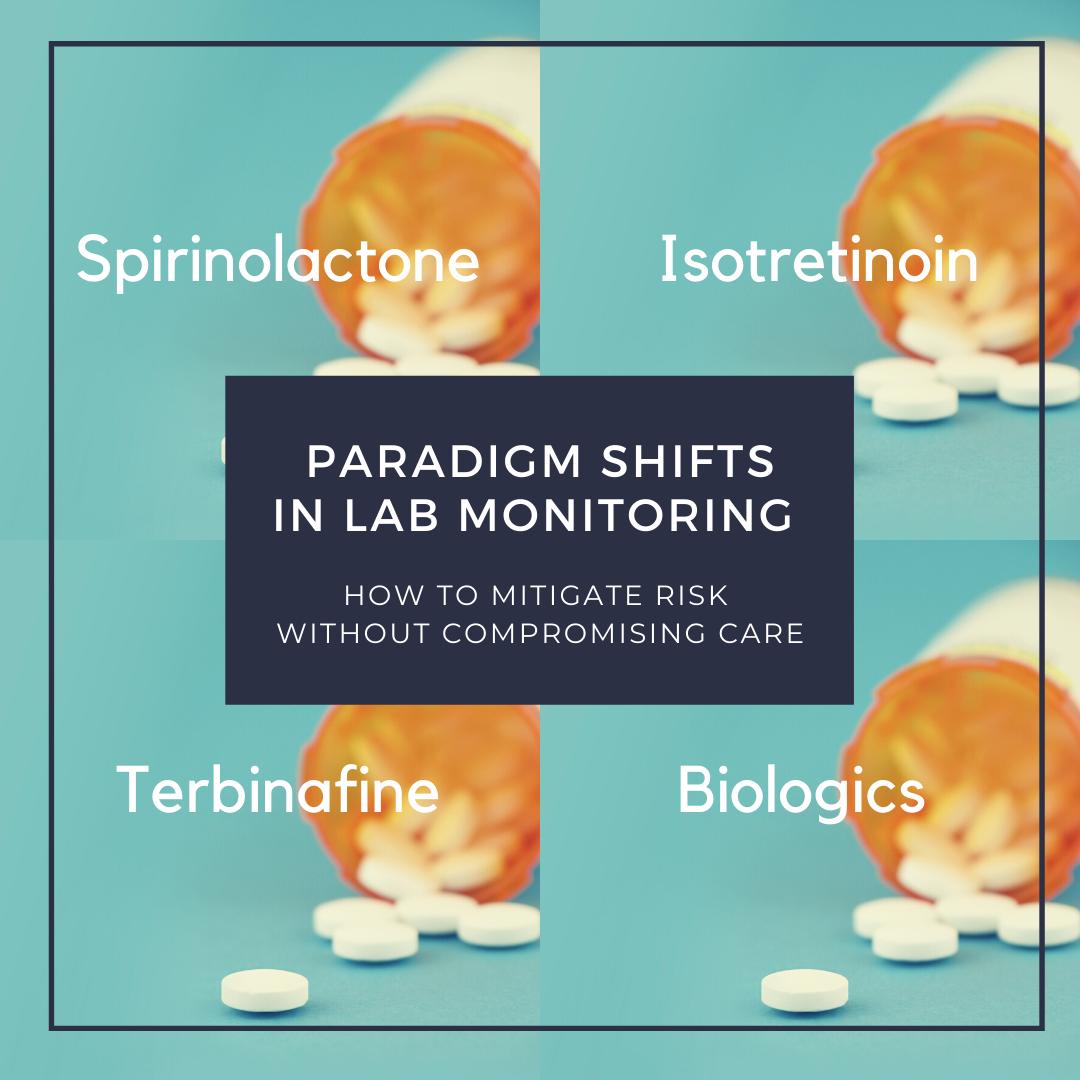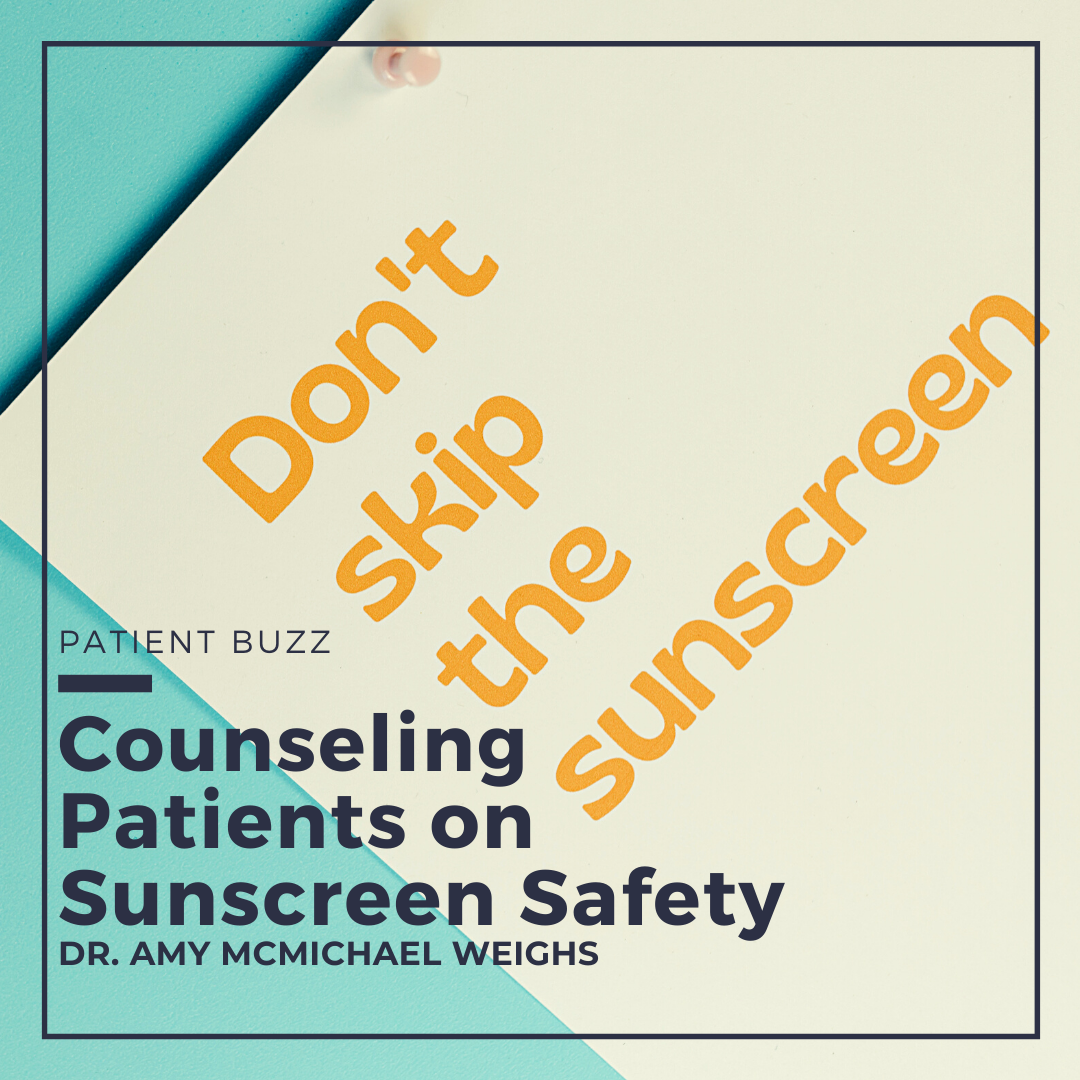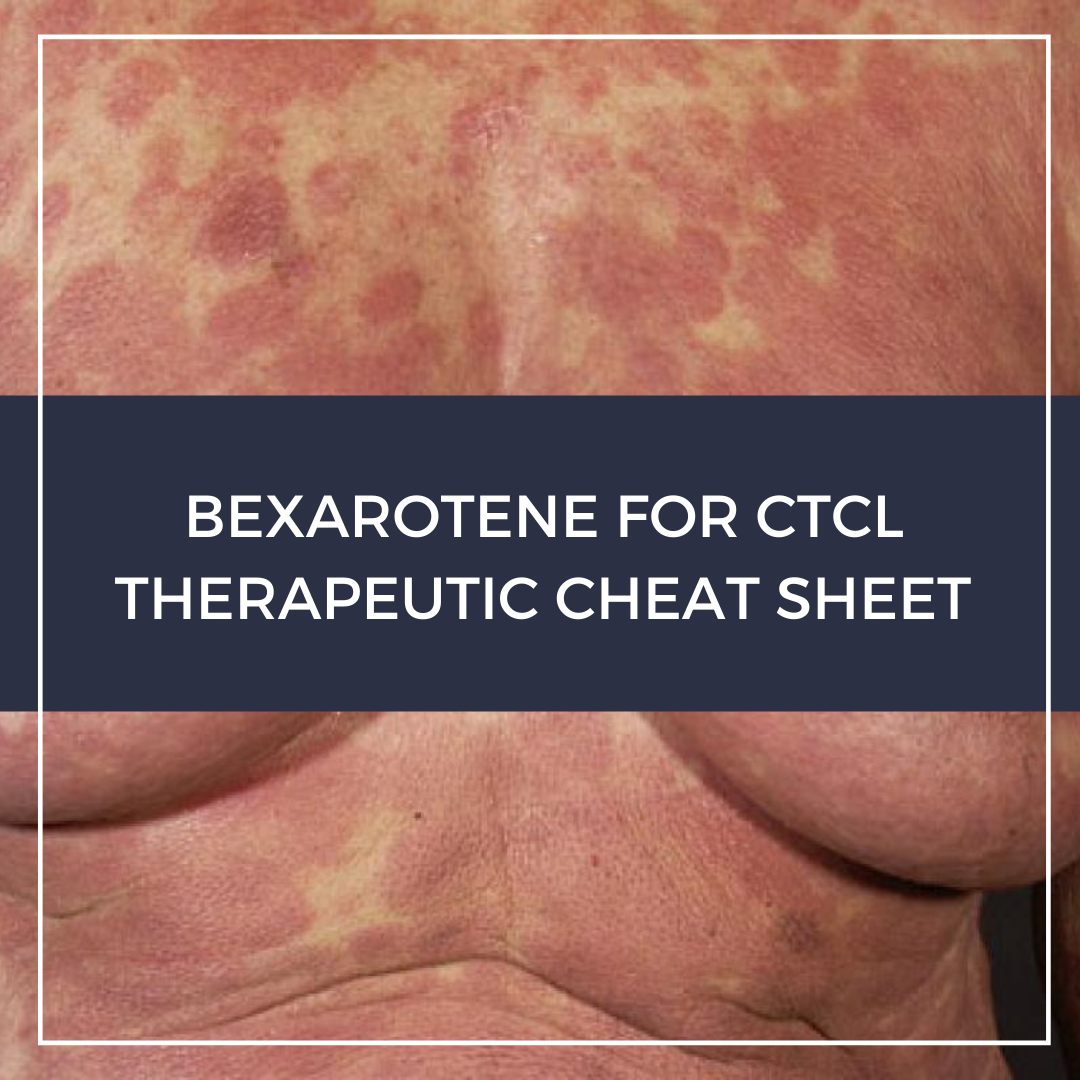Paradigm Shifts in Lab Monitoring
138481384813848 How to Mitigate Risk without Compromising Care
If you were to counsel a patient on every possible risk of a given medication, it would be a long list of extreme and rare potential outcomes and almost certainly leave the patient in doubt whether it is safe even to take. Frequent lab monitoring has been common practice and often used to reduce the perception of risk with systemic medication …
How to Mitigate Risk without Compromising Care
If you were to counsel a patient on every possible risk of a given medication, it would be a long list of extreme and rare potential outcomes and almost certainly leave the patient in doubt whether it is safe even to take. Frequent lab monitoring has been common practice and often used to reduce the perception of risk with systemic medication …
 How to Mitigate Risk without Compromising Care
If you were to counsel a patient on every possible risk of a given medication, it would be a long list of extreme and rare potential outcomes and almost certainly leave the patient in doubt whether it is safe even to take. Frequent lab monitoring has been common practice and often used to reduce the perception of risk with systemic medication …
How to Mitigate Risk without Compromising Care
If you were to counsel a patient on every possible risk of a given medication, it would be a long list of extreme and rare potential outcomes and almost certainly leave the patient in doubt whether it is safe even to take. Frequent lab monitoring has been common practice and often used to reduce the perception of risk with systemic medication … 

 Several media outlets have covered benzene contamination in certain sunscreens, and Johnson & Johnson recently announced a recall of certain sunscreens due to benzene contamination.
Should patients be concerned about the safety of the sunscreens they use, and how should dermatologists answer questions about sunscreen safety?
I consulted two expert dermatologists: Dr. Amy McMichael, pr …
Several media outlets have covered benzene contamination in certain sunscreens, and Johnson & Johnson recently announced a recall of certain sunscreens due to benzene contamination.
Should patients be concerned about the safety of the sunscreens they use, and how should dermatologists answer questions about sunscreen safety?
I consulted two expert dermatologists: Dr. Amy McMichael, pr …  Tanning beds are NOT safer than the sun.1
More than 419,000 cases of skin cancer in the U.S. each year are linked to indoor tanning.2
Melanoma is the second most common cancer in females age 15-29.3
Tanning = DNA injury to your skin4
Skin exposed to UV radiation increases production of melanin to protect the skin from further damage. The increased melanin causing the tan color change is a si …
Tanning beds are NOT safer than the sun.1
More than 419,000 cases of skin cancer in the U.S. each year are linked to indoor tanning.2
Melanoma is the second most common cancer in females age 15-29.3
Tanning = DNA injury to your skin4
Skin exposed to UV radiation increases production of melanin to protect the skin from further damage. The increased melanin causing the tan color change is a si …  Alopecia areata is a form of non-scarring hair loss that affects both children and adults, causing significant quality of life impairment. Varying from localized to widespread hair loss, including alopecia totalis and universalis variants, alopecia areata can be self-resolving or chronic in its course. For years and in some cases centuries, treatment was limited to caustic substances that irritate …
Alopecia areata is a form of non-scarring hair loss that affects both children and adults, causing significant quality of life impairment. Varying from localized to widespread hair loss, including alopecia totalis and universalis variants, alopecia areata can be self-resolving or chronic in its course. For years and in some cases centuries, treatment was limited to caustic substances that irritate …  Cutaneous T cell lymphoma (CTCL) is the most common primary cutaneous lymphoma, and in some patients, it could be persistent for decades. Therapy for CTCL depends on disease stage and response to prior treatments. In this month’s installment of Therapeutic Cheat Sheets, we will discuss use of bexarotene for the treatment of CTCL.
BEXAROTENE THERAPEUTIC CHEAT SHEET
Compiled by: Adrianna Gonzale …
Cutaneous T cell lymphoma (CTCL) is the most common primary cutaneous lymphoma, and in some patients, it could be persistent for decades. Therapy for CTCL depends on disease stage and response to prior treatments. In this month’s installment of Therapeutic Cheat Sheets, we will discuss use of bexarotene for the treatment of CTCL.
BEXAROTENE THERAPEUTIC CHEAT SHEET
Compiled by: Adrianna Gonzale …